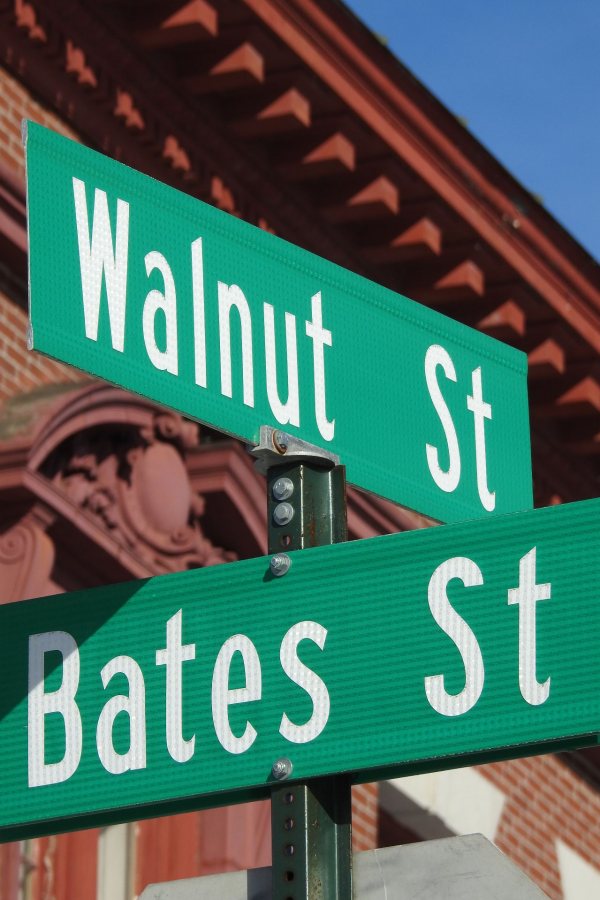The downtown Lewiston neighborhood where streets have names like Oak and Maple is dubbed “the tree streets.”
Pin It on Penn
William Penn originated the street-naming practice in 1682 when he gave Philadelphia’s north-south streets names like Locust, Spruce, and Vine. Other cities soon followed Penn’s path.
 Franklin Speaking
Franklin Speaking
Lewiston’s street naming occurred mostly in the mid-1800s.
The Franklin Co., a holding company for the Lewiston mills that owned most of the downtown land, laid out the street plan. It’s thought that one of Franklin’s engineers, John Straw, gave tree names to the streets that run nearly east and west.
The Bad Rap
The two U.S. Census tracts overlaying the tree streets are among the poorest in Maine. The neighborhood is also young, vibrant, and diverse. A third of its citizens are nonwhite, including many families who emigrated from Somalia and other African nations.

A historic school building at the corner of Walnut and Bates streets is now home to St. Mary’s Nutrition Center. (Jay Burns/Bates College)
In a state worried that its aging population thwarts economic development, the tree streets help make Lewiston younger (median age 39) than the rest of Maine (median age 43.5).
Taking Back the Tree Streets
Located on the corner of Birch and Howe streets, the nonprofit Tree Street Youth serves the children of downtown families. The name is an act of co-optation, says its co-founder, Julia Sleeper ’08, “a big opportunity to take back ‘tree street’ from its stereotype” — as a place to avoid — “to meaning a place where the youth are going to college, being successful, and doing great things.”
Branching Out
Bangor, Maine, also has a self-described tree-street neighborhood, as do the California cities of Costa Mesa and Laguna Beach; plus Norwood, Mass.; Princeton, N.J.; Nashua, N.H.; Yonkers, N.Y.; Elko, Nev.; Johnson City, Tenn.; Provo, Utah; Waynesboro, Va.; Bunbury, Wash.; Bluefield, W.Va.; and Casper, Wyo.
This story includes information from Frontier to Industrial City: Lewiston Town Politics 1768–1863, by Professor Emeritus of Political Science Douglas Hodgkin


